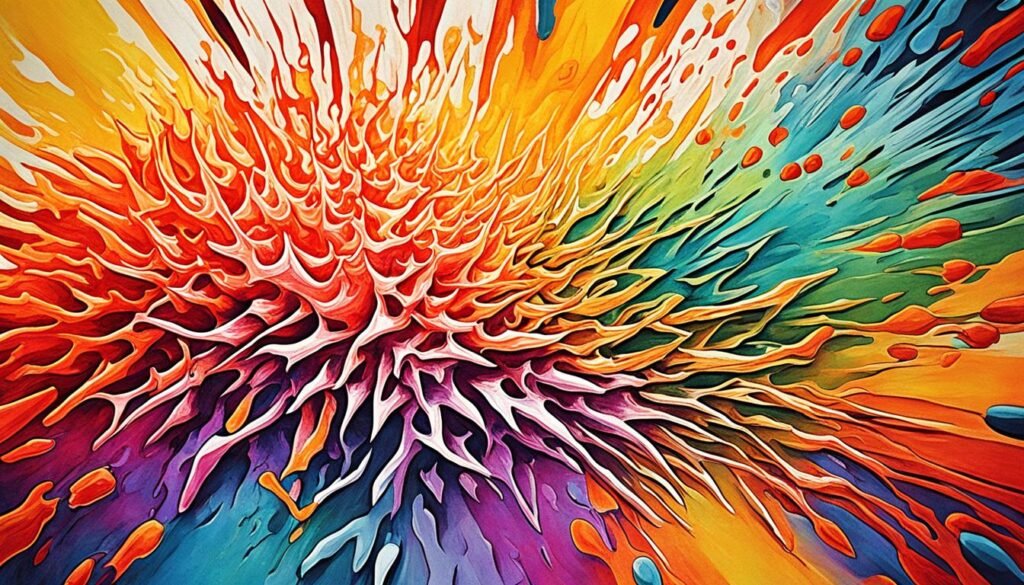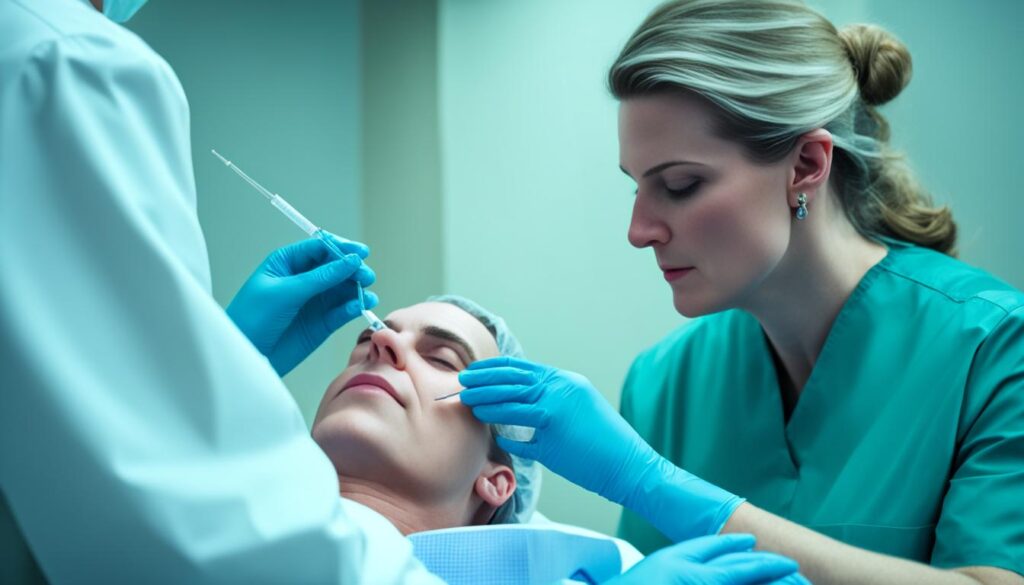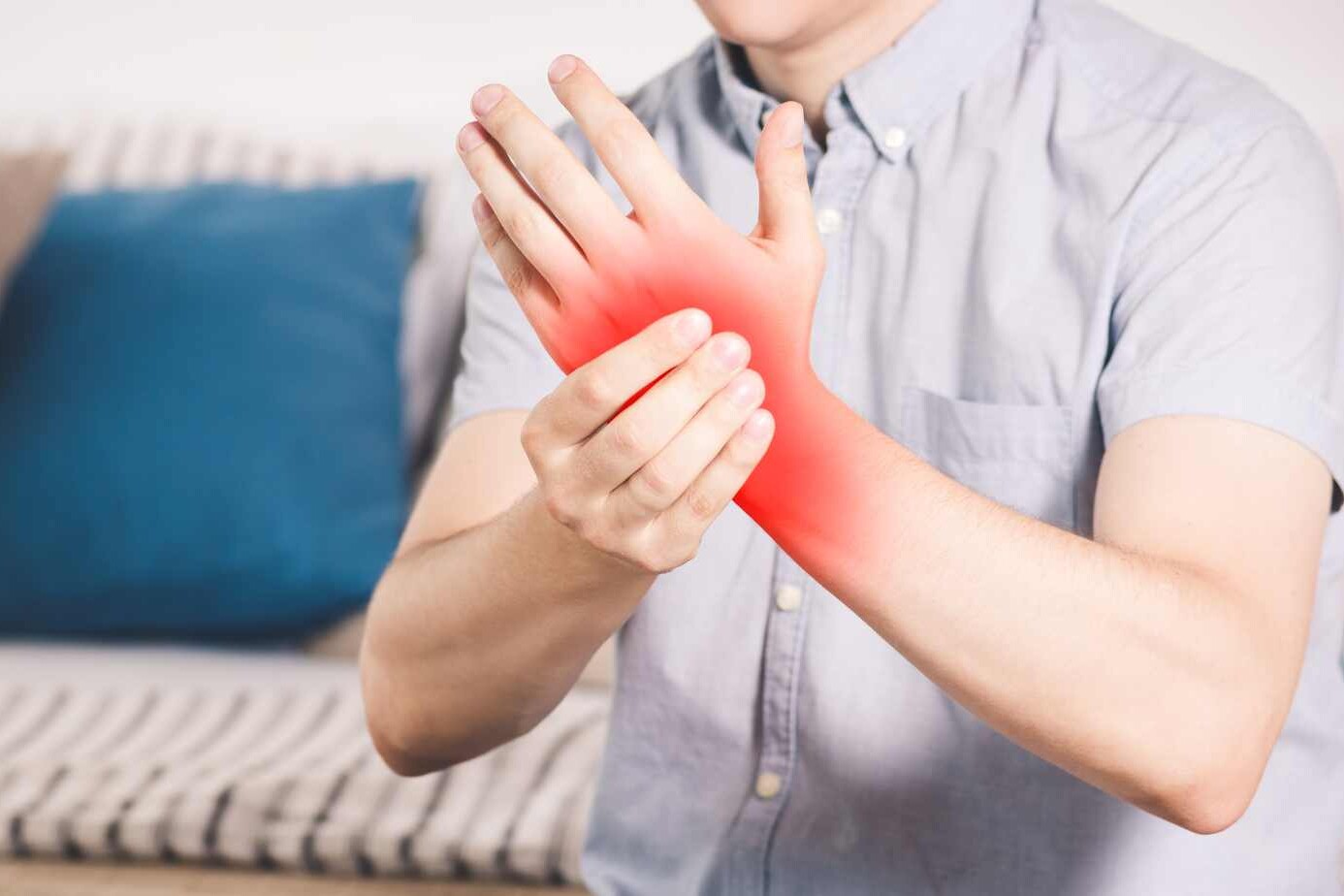Does your pain feel like a fire that won’t go out? Wondering what if the pain never stops?
If you have Complex Regional Pain Syndrome (CRPS), you might know this feeling too well. It’s a tough condition that makes life hard, but there’s hope.
CRPS alternative treatments offer hope to many who want relief beyond usual medicines. This condition can cause severe pain, stiffness, and swelling, affecting daily life deeply.
CRPS alternative treatments can ease your pain naturally, without relying only on pills. In this blog, we’ll look at what CRPS is, how it changes your life, and the best CRPS alternative treatments out there. You’ll also get my expert tips and real ways to feel better.
Whether you’re newly diagnosed or looking for better solutions, this is your expert-backed guide.
Table of Contents
ToggleUnderstanding Complex Regional Pain Syndrome (CRPS)
CRPS is short for Complex Regional Pain Syndrome. It’s a chronic pain condition that usually affects an arm or leg after injury or surgery. But the pain is much more severe than normal and can spread or worsen over time.
Unlike regular pain, CRPS stays long after the injury heals and often spreads. CRPS alternative treatments can be an essential piece of your recovery puzzle when traditional care alone isn’t enough.
CRPS Symptoms & Causes
CRPS can start suddenly after a minor injury and lead to intense symptoms:
- Severe, burning pain that may spread beyond the injury site
- Swelling, skin color changes, and temperature differences
- Stiffness and decreased movement
- Cause often linked to nerve injury or trauma, fractures, or surgery, but sometimes unknown
Causes:
- Often triggered by fractures, sprains, or surgery
- Nervous system goes into “overdrive”
CRPS often has no clear pattern, making it hard to diagnose early. CRPS alternative treatments are often personalized due to the variation in symptoms.
Symptoms can worsen without proper care. About 200,000 new CRPS cases are diagnosed yearly in the U.S.

Pain and Sensory Disturbances in CRPS
In CRPS, the pain experienced is often described as severe, constant, and unrelenting. It may be accompanied by sensory disturbances, such as hypersensitivity to touch or temperature changes. These sensory abnormalities can make even gentle stimulation painful and uncomfortable.
Autonomic and Motor Dysfunction in CRPS
Autonomic dysfunction in CRPS can manifest as changes in skin color and temperature, abnormal sweating patterns, and swelling in the affected area. Motor dysfunction can cause muscle weakness, loss of coordination, and difficulties with movement.
Neuropathic Pain in CRPS
Neuropathic pain in CRPS is caused by damage or dysfunction of the nerves. It is often described as burning, shooting, or electrical-like. This type of pain can be debilitating and difficult to manage.
The Impact of CRPS on Daily Life
CRPS can significantly impact an individual’s quality of life. The chronic pain and accompanying symptoms can make it challenging to perform daily activities, work, and engage in hobbies and social interactions. The physical and emotional toll of CRPS can also lead to feelings of frustration, anxiety, and depression.
It is crucial for individuals with CRPS to receive appropriate medical care and support. A multidisciplinary approach that includes pain management, physical therapy, psychological support, and lifestyle modifications can help individuals manage their symptoms and improve their overall well-being.
| CRPS Symptoms | Common Manifestations |
|---|---|
| Intense regional pain | Burning, tingling, shooting pain |
| Autonomic dysfunction | Changes in skin color and temperature, abnormal sweating, swelling |
| Motor dysfunction | Muscle weakness, loss of coordination, movement difficulties |
| Neuropathic pain | Burning, shooting, electrical-like pain |
Why is CRPS Misunderstood?
Studies show up to 35% of cases get misdiagnosed at first.
Many doctors misread CRPS as anxiety, arthritis, or fibromyalgia. CRPS is invisible on scans and misunderstood by non-specialists.
It is due to
- Lack of clear diagnostic tests
- Symptoms vary a lot between patients
- Tests like X-rays or MRIs may look normal
- Some doctors may be unfamiliar, causing delays in treatment
This makes finding effective CRPS alternative treatments even more important. CRPS needs awareness and a sharp eye to diagnose early and treat correctly.
Read → Understanding Complex Regional Pain Syndrome Type 1
Conventional Treatment Options for CRPS
When it comes to managing Complex Regional Pain Syndrome (CRPS), conventional treatment options play a crucial role in helping individuals find relief from their symptoms. These treatments often involve a combination of physical therapy, medications, and nerve blocks.
Yet, most patients include CRPS alternative treatments alongside these to get additional, lasting benefits.
Physical Therapy
Physical therapy is an integral part of the conventional treatment approach for CRPS. It aims to improve range of motion, reduce pain, and minimize disability. Through targeted exercises and techniques, physical therapy can help individuals regain strength and functionality in the affected limb or body part. A skilled physical therapist will tailor the treatment plan to address the specific needs and limitations of each individual.
Medications
Medications prescribed by healthcare professionals can help manage the pain and associated symptoms of CRPS. Analgesics, such as opioids or nonsteroidal anti-inflammatory drugs (NSAIDs), may be prescribed to alleviate pain. Anti-inflammatory medications can help reduce swelling and inflammation in the affected area. Additionally, antidepressants and anticonvulsants may also be prescribed to address the emotional and neurological aspects of CRPS.
Nerve Blocks
Nerve blocks are another treatment option commonly used in the management of CRPS. These procedures involve injecting an anesthetic or analgesic medication into the affected nerves to interrupt the transmission of pain signals. Sympathetic nerve blocks for crps , in particular, can be effective in providing temporary relief by targeting the sympathetic nervous system. While nerve blocks can offer significant pain reduction, the effects are typically temporary. Multiple injections may be required depending on the individual’s response.
While conventional treatments like physical therapy, medications, and nerve blocks have shown positive results in many cases, it’s important to remember that each individual’s journey with CRPS is unique. What may work for one person may not yield the same results for another. The effectiveness of these treatments can vary depending on factors such as the severity of CRPS, individual response to treatment, and overall health. Therefore, it’s crucial to work closely with a healthcare professional to develop a personalized treatment plan that suits your specific needs.

| Treatment Option | Description |
|---|---|
| Physical Therapy | Targeted exercises and techniques to improve range of motion, reduce pain, and minimize disability |
| Medications | Analgesics, anti-inflammatories, antidepressants, and anticonvulsants to manage pain and associated symptoms |
| Nerve Blocks | Injection of anesthetic or analgesic medication into affected nerves to interrupt pain signals |
Mind-Body Therapies for CRPS
Mind-body therapies are an essential part of alternative treatments for Complex Regional Pain Syndrome (CRPS). These therapies focus on the connection between the mind, body, and emotions to promote healing and relieve symptoms. Incorporating mind-body techniques into your CRPS treatment plan can enhance the effectiveness of conventional therapies and improve your overall well-being.
Relaxation Techniques
Relaxation techniques are a cornerstone of mind-body therapies for CRPS. They can help reduce stress levels, ease muscle tension, and manage pain. Deep breathing exercises, meditation, and guided imagery are effective relaxation techniques that promote relaxation and bring relief from CRPS symptoms. By consciously focusing on your breath and visualizing a peaceful setting, you can create a sense of calm and reduce the intensity of pain.
Biofeedback
Biofeedback is a technique that allows individuals to learn how to control certain bodily functions consciously. It provides real-time information about physiological responses such as heart rate, blood pressure, and skin temperature. By monitoring these responses, you can train yourself to control them effectively. Biofeedback has been shown to be beneficial in managing pain and improving physical and emotional well-being in CRPS patients. Consult with a qualified practitioner to learn more about biofeedback and its potential benefits for your condition.
Yoga
Yoga is an ancient practice that combines physical postures, breathing exercises, and meditation. It focuses on harmonizing the mind, body, and spirit. Regular practice of yoga can help improve flexibility, enhance muscle strength, and promote relaxation. It has been found to be effective in managing chronic pain conditions, including CRPS. Yoga poses specifically designed to target the affected areas can provide pain relief and improve overall function. To benefit from the therapeutic effects of yoga, it is advisable to work with a certified yoga instructor experienced in working with individuals with chronic pain conditions.

Integrating mind-body therapies, like relaxation techniques, biofeedback, and yoga, into your CRPS treatment plan can offer powerful tools for managing your symptoms and improving your quality of life. These therapies address the underlying stress, tension, and emotional factors that contribute to CRPS, providing holistic support for your physical and mental well-being.
Physical Modalities for CRPS
Simple methods you can use yourself for chronic pain relief. These at-home methods can ease symptoms and support healing between formal treatments.
TENS Unit Therapy (with cautions)
Transcutaneous Electrical Nerve Stimulation (TENS) units deliver mild electrical pulses through the skin to interrupt pain signals.
- Small, battery-operated device
- Electrodes are attached to painful areas
- Can temporarily reduce nerve-related pain
- Should be used under professional supervision
Use TENS unit CRPS therapy only under guidance, especially if you have implanted devices or sensitive skin.
Heat vs. Cold Therapy
It is a classic CRPS alternative treatments to reduce inflammation or soothe muscles. Temperature therapy can ease discomfort—but the right choice depends on your symptoms.
- Heat therapy: Use warm compresses or heating pads to relax tight muscles and improve circulation. Helpful for deep aches or stiffness.
- Cold therapy: Use ice packs or cool cloths to reduce inflammation and numb sharp, burning pain.
- Contrast therapy: Alternating heat and cold can improve circulation and reduce pain flare-ups.
Start with 15-minute sessions and protect your skin with a towel or barrier.
Hydrotherapy & Movement in Water
Water therapy offers gentle, low-impact relief that’s ideal for CRPS patients.
- Warm water helps loosen stiff joints and soothes nerves
- Gentle movement in water reduces load on painful limbs
- Promotes better range of motion without overstraining
- Improves mood and reduces anxiety associated with pain
Hydrotherapy is a staple in many CRPS recovery programs and can be done in a bathtub, heated pool, or spa with medical clearance.
| Physical Modality | Benefits | |
|---|---|---|
| Transcutaneous Electrical Nerve Stimulation (TENS) | – Stimulation of sensory nerves – Reduction of pain signals – Production of endorphins (natural pain relievers) | |
| Heat/Cold Therapy | – Increased blood flow – Relaxation of muscles – Reduction of inflammation – Temporary pain relief | |
| Hydrotherapy | – Pain relief – Improved range of motion – Muscle relaxation – Increased circulation |
Alternative Treatments for CRPS
New options are showing promise. Many patients look for CRPS alternative treatments when conventional options fall short.
Acupuncture for Pain Relief
Many patients report big improvements in pain after acupuncture.
- Stimulates natural painkillers in the body
- Reduces inflammation and nerve pain
- Helps restore blood flow in affected limbs
Over 75.5% of CRPS patients in a study showed reduced pain with acupuncture chronic pain sessions.
Acupuncture chronic pain therapy is safe when done by trained professionals.
Herbal Remedies
Some herbs can help control inflammation and nerve sensitivity.
- Turmeric (curcumin): anti-inflammatory
- Devil’s claw: muscle and joint pain
- Boswellia: reduces swelling
Always consult your doctor before trying herbs to avoid interactions.
Essential Oils
Oils can soothe your nerves and skin.
- Lavender helps you relax and sleep.
- Peppermint cools burning pain.
- Rub them on gently for quick relief.
Aromatherapy and topical oils are growing in CRPS support.
- Peppermint oil: numbing effect
- Lavender oil: reduces anxiety, helps sleep
- Frankincense: calming nerve pain
These can be part of CRPS alternative treatments plan.
Rehabilitation and Pain Management Programs for CRPS
Rehabilitation and pain management programs play a crucial role in providing comprehensive care for individuals with Complex Regional Pain Syndrome (CRPS). These programs adopt a multidisciplinary approach, combining various treatment modalities to address the complex nature of CRPS. They aim to improve function, manage pain, and enhance the overall quality of life for individuals living with this challenging condition.
Typically, rehabilitation and pain management programs encompass a range of healthcare professionals and services. These may include:
- Physical therapy: focuses on restoring physical function, improving mobility, and reducing pain through targeted exercises, manual therapies, and modalities.
- Occupational therapy: aims to enable individuals to regain independence in daily activities and develop coping strategies to manage CRPS-related challenges.
- Psychological counseling: helps individuals address the emotional and psychological impact of CRPS, providing support to cope with pain, stress, and anxiety.
- Vocational rehabilitation: assists individuals in returning to work or exploring alternative employment options by providing job training, accommodations, and support.
A multidisciplinary approach ensures that all aspects of CRPS are addressed, taking into account the physical, psychological, and social aspects of the condition. By addressing these elements comprehensively, rehabilitation and pain management programs aim to provide holistic care and support for CRPS patients.
Now, let’s take a closer look at the different components of these programs:
Physical Therapy:
Physical therapy plays a central role in CRPS rehabilitation programs. It focuses on improving range of motion, strength, and function while also reducing pain and minimizing disability. Physical therapists use a variety of techniques, such as therapeutic exercises, manual therapy, and specialized modalities, to target the specific needs of CRPS patients.
Psychological Support & Counseling
Mental health is central to healing. When you live with constant pain, your brain can become hyper-alert, anxious, or even depressed. That emotional state can amplify your physical pain.
- One-on-one therapy helps patients process trauma, fear, or guilt tied to their diagnosis
- Cognitive Behavioral Therapy (CBT) teaches coping strategies and pain reframing
- Support groups (in-person or online) offer shared stories and emotional validation
Vocational Rehab – Getting Life Back
CRPS often interrupts careers and routines. Vocational rehab helps rebuild both.
- Assesses your physical ability to return to your previous job—or prepare for a new one
- Offers job training, ergonomic support, and workplace accommodations
- Restores a sense of purpose, independence, and financial security
Ask your doctor about local vocational rehab programs or referrals to certified specialists.
When to Consider a Pain Management Program
When CRPS becomes unmanageable at home, a structured pain program can be life-changing.
- Provides a comprehensive care team: neurologists, physical therapists, psychologists, and case managers
- Focuses on reducing pain while restoring daily functioning
- Often includes movement therapy, medication reviews, counseling, and lifestyle coaching
Ideal for patients who’ve tried multiple treatments without long-term relief or those experiencing emotional burnout from pain.
| Treatment Modalities | Benefits |
|---|---|
| Physical Therapy |
|
| Occupational Therapy |
|
| Psychological Counseling |
|
| Vocational Rehabilitation |
|
Self-Care and Lifestyle Modifications for CRPS
When it comes to managing CRPS, self-care and lifestyle modifications can make a significant difference in improving symptoms and enhancing overall well-being. By prioritizing stress management, healthy habits, and self-awareness, individuals with CRPS can take an active role in their own recovery.
Stress Management Techniques
Stress fuels inflammation, heightens nerve sensitivity, and worsens CRPS symptoms.
- Deep breathing, meditation, and journaling reduce cortisol levels
- Take digital breaks; limit doomscrolling, email, and blue light before bed
- Build a consistent bedtime routine; aim for 7–9 hours of sleep nightly
Prioritize mental calm like you would any prescription.
Anti-Inflammatory Diet & Supplements
Your food choices can either calm or aggravate your system.
- Add: turmeric, ginger, berries, dark leafy greens, flaxseed, and salmon
- Reduce: sugary snacks, sodas, processed meats, and fast food
- Supplements to ask your doctor about: magnesium, vitamin D3, omega-3s, curcumin
These dietary changes promote CRPS pain relief without medication and support nerve repair.
Listening to Your Body
You know your body better than anyone. Respect its signals.
- On good days, don’t overexert; balance activity with recovery
- On bad days, allow rest without guilt; it’s part of healing
- Keep a symptom journal to spot patterns and flare-up triggers
Listening to your body is wisdom. Long-term recovery starts here.
| Self-Care Tips for CRPS |
|---|
| Practice stress-relief techniques daily |
| Maintain a well-balanced diet |
| Engage in regular low-impact exercise |
| Ensure adequate sleep and rest |
| Listen to your body and make necessary adjustments |
Dr. Chugh’s Medical Perspective on CRPS Management
Dr. Chandril Chugh, a trained neurologist, emphasizes early diagnosis and patient-specific care. He encourages patients to combine non-medication CRPS treatment with traditional care, based on evidence. That’s why a personalized plan is necessary.
When should you see a pain neurologist?
- If your pain lasts more than 3 months
- If treatments haven’t worked
- If it’s spreading or worsening
Book a consultation with Dr. Chandril Chugh today!
Conclusion
Living with complex regional pain syndrome (CRPS) can be a challenging journey, but there is hope. While there is no cure for CRPS, there are alternative treatments available that can help manage symptoms, improve function, and enhance the overall quality of life for individuals with CRPS.
From mind-body therapies such as relaxation techniques, meditation, and yoga to physical modalities like transcutaneous electrical nerve stimulation (TENS) and hydrotherapy, various options exist to explore and find what works best for you. Rehabilitation and pain management programs that take a multidisciplinary approach can provide comprehensive care and support, addressing the physical, psychological, and social aspects of CRPS.
It is crucial to work closely with a healthcare professional to develop an individualized treatment plan tailored to your specific needs and preferences. Self-care strategies, including stress management techniques, healthy lifestyle modifications, and actively listening to your body, can also play an essential role in managing CRPS.
While the journey may be challenging, with the right combination of alternative treatments and support, individuals with CRPS can find hope and regain control over their lives. Remember, you are not alone, and there are solutions out there to help you manage CRPS and strive for a better future.
FAQ
What is complex regional pain syndrome (CRPS)?
Complex regional pain syndrome (CRPS) is a rare disorder characterized by intense regional pain, autonomic disturbances, and vasomotor abnormalities.
What are the conventional treatment options for CRPS?
Conventional treatment options for CRPS include physical therapy, medications, nerve blocks, and other interventional procedures.
What are mind-body therapies and how can they help with CRPS?
Mind-body therapies focus on the connection between the mind, body, and emotions to promote healing and relieve symptoms. They can be used as complementary treatments for CRPS to enhance the conventional treatment approach.
What physical modalities are beneficial for individuals with CRPS?
Physical modalities such as transcutaneous electrical nerve stimulation (TENS), heat and cold therapy, and hydrotherapy can be used alongside other treatments to manage CRPS symptoms.
What alternative medicine approaches can be explored for managing CRPS?
Alternative medicine approaches such as acupuncture, herbal remedies, and essential oils are increasingly being explored for their potential benefits in managing CRPS.
What are rehabilitation and pain management programs for CRPS?
Rehabilitation and pain management programs that follow a multidisciplinary approach can provide comprehensive care for individuals with CRPS, addressing the physical, psychological, and social aspects of the condition.
How can self-care and lifestyle modifications help in managing CRPS?
Self-care and lifestyle modifications, including stress management techniques and maintaining a healthy lifestyle, can play an important role in managing CRPS symptoms.
Source Links
About The Author

This article is medically reviewed by Dr. Chandril Chugh, Board-Certified Neurologist, providing expert insights and reliable health information.
Dr. Chandril Chugh is a U.S.-trained neurologist with over a decade of experience. Known for his compassionate care, he specializes in treating neurological conditions such as migraines, epilepsy, and Parkinson’s disease. Dr. Chugh is highly regarded for his patient-centered approach and dedication to providing personalized care.
→ Book a consultation to discover which remedies suit your needs best.




